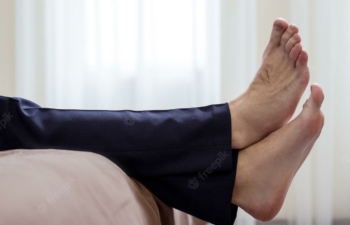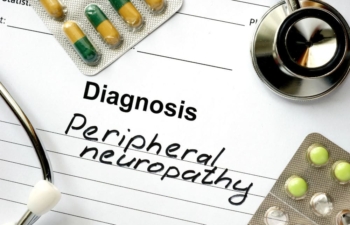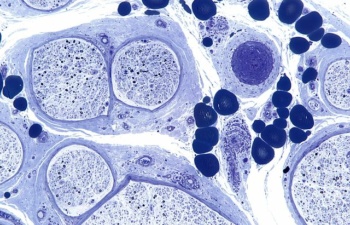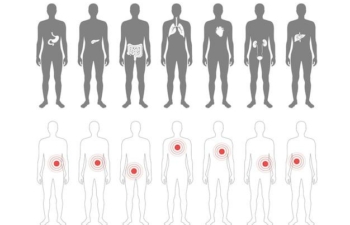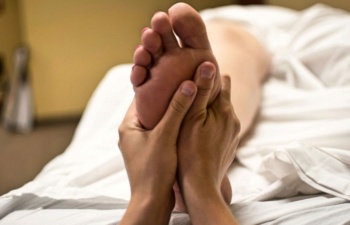Are you worried about tingling, numbness, or burning sensations in your hands or feet? You're not alone. Many people just like you experience these symptoms and wonder if they may be suffering from neuropathy. But how can you be sure? In this article, we'll explore the top 10 essential tests for an accurate neuropathy diagnosis.
Nerve Conduction Study (NCS): Fast, Accurate, and Minimally Invasive
The NCS is a gold standard test that measures the speed and strength of electrical signals in nerves. This helps identify any nerve damage or dysfunction. How does it work? By stimulating your nerves with small electrical pulses, the NCS tracks the response and provides valuable information about your nerve health. Fast, accurate, and minimally invasive, the NCS is a go-to test for diagnosing neuropathy.
Electromyography (EMG): Delving Deeper into Muscle and Nerve Function
The EMG takes things a step further by recording electrical activity within muscles. This test can provide insight into muscle and nerve function, helping to pinpoint potential damage. During the EMG, tiny needles are inserted into your muscles to measure the electrical activity. While it may sound daunting, the procedure is generally well-tolerated, and the results are invaluable in diagnosing neuropathy.
Blood Tests: Uncovering the Underlying Causes
Blood tests are crucial for identifying possible causes of neuropathy, such as diabetes, vitamin deficiencies, or autoimmune disorders. They're a simple yet effective way to rule out other contributing factors and get a clearer picture of what's going on in your body. Armed with this information, you and your healthcare provider can work together to develop a targeted treatment plan.
Physical Examination: A Thorough Evaluation of Your Feet
A comprehensive physical examination of your feet is essential in detecting signs of neuropathy. During the exam, your healthcare provider will assess touch sensitivity, temperature, vibration, muscle strength, and reflexes. This in-depth evaluation helps identify any abnormalities and ensures no stone is left unturned in your quest for an accurate diagnosis.
Quantitative Sensory Testing (QST): A Detailed Look at Nerve Function
QST measures your nerves' response to various stimuli, such as pressure, temperature, and vibration. This test is particularly useful in assessing nerve function and sensitivity. By understanding how your nerves respond to different sensations, your healthcare provider can better determine the extent of your neuropathy and develop an appropriate treatment plan.
Monofilament Test: A Simple Yet Effective Assessment
The monofilament test uses a nylon filament to assess sensitivity and the ability to feel pressure on your feet. This quick and easy test is a reliable way to identify potential nerve damage and plays a vital role in the diagnostic process.
Ankle-Brachial Index (ABI): A Window into Blood Flow
The ABI test compares blood pressure in your ankle and arm, providing insight into blood flow and potential peripheral artery disease. This information is crucial, as poor blood flow can contribute to neuropathy. By addressing any circulation issues, you can help alleviate neuropathy symptoms and protect your nerves from further damage.
Skin Biopsy: A Closer Look at Small Fiber Neuropathy
A skin biopsy involves taking a small skin sample to examine the nerve fibers under a microscope. This test provides valuable information about small fiber neuropathy, a type of neuropathy affecting the small nerve fibers responsible for sensations such as pain and temperature. Although the procedure may sound intimidating, it's typically done with local anesthesia, and the discomfort is minimal.
Ultrasound Imaging: Visualizing Nerves and Surrounding Structures
Ultrasound imaging allows healthcare providers to visualize nerves and surrounding structures in real-time. This non-invasive test can identify any abnormalities or compression that may be causing neuropathy symptoms. By addressing these issues, you can help alleviate discomfort and protect your nerves from further damage.
Lumbar Puncture (Spinal Tap): Assessing Nervous System Health
A lumbar puncture, also known as a spinal tap, involves collecting cerebrospinal fluid to evaluate for potential infections, inflammatory conditions, or other issues affecting the nervous system. Although this test is less commonly used in diagnosing neuropathy, it can provide critical information in certain cases, helping to ensure the most accurate diagnosis possible.
Conclusion
These ten tests represent the most common diagnostic methods used to diagnose neuropathy, sorted in descending order of prevalence. By undergoing these essential tests, you can be confident in your neuropathy diagnosis and take the necessary steps to manage your condition effectively. Remember, knowledge is power. With accurate information, you can work together with your healthcare provider to create a targeted treatment plan and improve your quality of life.
If you or a loved one are experiencing symptoms of neuropathy, don't hesitate to seek professional help. Reach out to your healthcare provider or visit neuropathyprogram.com for more information, resources, and support.
Sources and References
The following sources have been used to gather accurate and up-to-date information for this article. Each of these sources provides valuable insights into neuropathy diagnosis and related topics.
- Mayo Clinic – Peripheral Neuropathy Diagnosis and Treatment
- National Center for Biotechnology Information (NCBI) – Diagnostic Approach to Peripheral Neuropathy
By referring to these reputable sources, you can further explore the various tests and diagnostic methods for neuropathy, as well as find additional information on treatment options and management strategies. Remember, staying informed is a key step in taking control of your health and improving your quality of life.


